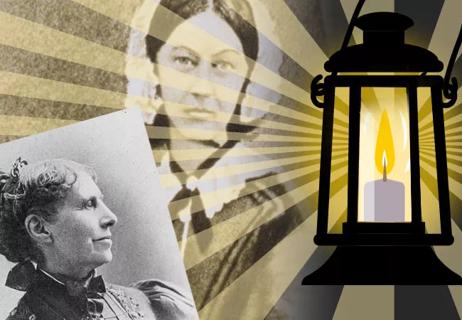Content offers roadmap for research program development

By Kelly Hancock, DNP, RN, NE-BC, FAAN
Cleveland Clinic is a non-profit academic medical center. Advertising on our site helps support our mission. We do not endorse non-Cleveland Clinic products or services. Policy

Nancy Albert, PhD, CNS, RN
As Executive Chief Nursing Officer (ECNO) for Cleveland Clinic, I sat down with Nancy Albert, PhD, CCNS, CHFN, CCRN, NE-BC, FAAN, Associate Chief Nursing Officer (ACNO) of our organization’s Office of Nursing Research and Innovation, to discuss her book on developing and nurturing hospital-based nursing research programs. Dr. Albert served as editor of Building and Sustaining a Hospital-Based Nursing Research Program, for which she and several members of her nursing research team wrote.
Dr. Albert has been an instrumental member of our executive nurse leadership team for a number of years, driving nursing research and innovation strategy and growth. Throughout her tenured career as a nurse scientist, she has published more than 230 peer-reviewed articles in nursing and medical journals, written various book chapters and is a national and international presenter and thought leader in cardiovascular diseases. Among numerous other accolades, Dr. Albert holds three national nursing certifications, including board-certification as a nurse executive, and is an adjunct associate professor at an Ohio-based school of nursing and an adjunct full professor at Aalborg University in Denmark.
Note: Dr. Albert will be highlighting and discussing some of the key points of her book at the National 2019 Magnet Conference. She is also scheduled for a book signing Oct. 10 from 4–4:30 p.m. (outside of her concurrent session).
A: My inspiration behind the writing and publishing of this book was really to offer other nurses helpful information, insight, guidance and education on a highly important realm of professional nursing that, for most organizations, is still underdeveloped. I have been with Cleveland Clinic, a world-renowned health system, for more than 25 years, but until a little over one decade ago, our organization had one nurse researcher whose job it was to lead his or her own program of research and mentor clinical nurses. There was no research program or infrastructure – no systems or processes. And, with a few exceptions, nurses were not encouraged to conduct research.
I made the decision to truly embrace clinical nursing research in 1991 and increased research as a focus of my nursing career over time. In 2004, I accepted the position of director of nursing. Since that time, I’ve progressed to where I am today as ACNO, and we’ve transformed our nursing research program –learning a lot of lessons along the way. With this book, my colleagues and I really wanted to show nurses how to build and sustain a successful nursing research program. As many hospital and health system leaders have come to realize, nursing research is a fundamental requirement for transforming patient care and administrative practices as well as for attaining and sustaining high-quality nursing status, such as the American Nurses Credentialing Center’s Magnet Recognition Program®.
A: My hope is that once readers finish that last chapter, they will have the knowledge they need to successfully integrate nursing research into the workflow of their complex healthcare environment. There are a number of key takeaways throughout the book, but some of the most important include:
A: Hospital- or clinical-based nurse leaders and nurse researchers are likely to benefit most from the book. The foundational principles used throughout apply to hospitals of all sizes – including those without extensive resources or ambulatory centers.
The book was written in a way that offers guidance for adapting structures and processes to fit the needs of hospitals with varied nursing staff sizes and program goals. We’ve included detailed templates to assist the novice to the most experienced researchers. We’ve incorporated guidelines for committees/councils to support nursing research within a hospital. We’ve broken down the ‘who,’ ‘what,’ and ‘why’ of systems that enhance workflow and collaboration. And we’ve incorporated tables and figures and nurse-written stories that describe the real-world experiences of implementing clinical research into nursing practice.
A: In terms of advice, I would simply say, you can do this! I outline the following in more detail in the preface of the book, but when I travel, people often tell me: “You are from Cleveland Clinic and have access to resources that we don’t have at our small hospital. Your systems would never work in our hospital.” But, in truth, Cleveland Clinic has large and small hospitals – including urban, community and rural hospitals. Each serves patient populations that differ in culture, economic circumstances, and community healthcare resources.
We have learned the power of using multiple methods to achieve goals, being open to new ways of producing outcomes, and individualizing our coaching styles based on the needs of the clinical nurse research team, the research project, and available resources. I am a firm believer that hospital-based nursing research cannot be sustained when it is dependent on one nurse researcher – it takes a village to make nursing research thrive. Success is realized when people, structures, processes, and system resources are available and in alignment with the hospital organization and the vision and mission of nursing leaders.
A: The 272-page book is available for purchase on the Springer Publishing Company website for $80 (ISBN 13 9780826128140). Special bulk discount pricing is offered for organizations looking to purchase 10 or more copies. Additionally, it is available on Amazon.
Dr. Albert welcomes inquiries from nurses at other hospitals and health systems as she and her team often serve as consultants for those looking to develop or enhance their nursing research programs. She can be contacted at 216.444.7028 or albertn@ccf.org.

By listening closely and responding authentically, leaders can create an environment where nurses feel valued

Communication and self-reflection key to world-class patient care

Nurse leaders play a pivotal role in employee engagement, quality, safety – and, yes, patient care

Text highlights historic contributions to research, education and clinical care

Insights and advice from a nursing leader

Find balance, slow down, seek feedback and more

A new age in practice, physician partnerships and more

Insight on heart failure awareness and the work of HFSA